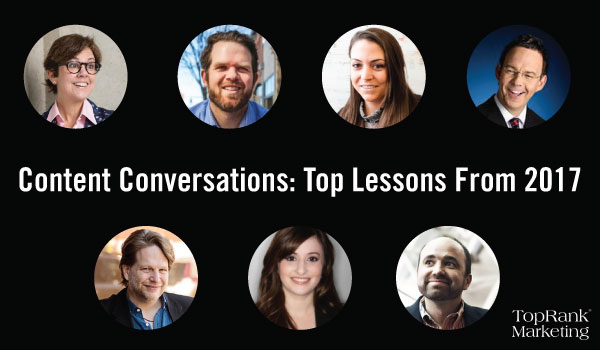By avita dcosta.
Many brands are also switching from celebrity endorsements to influencers, as it becomes and increasingly powerful marketing channel for marketers. But it’s easy to make mistakes, so how do you avoid them?
Influencer Marketing has become one of the most powerful tools in a marketing teams’ toolkit today. In 2016 Salesforce’s Paradot claimed thay 86% of marketers are already using some form of influencer marketing to reach consumers. And research shows that is probably going to continue, why?
People no longer trust the brands. A lot of us are no longer influenced by these traditional marketing techniques and increasingly we are more likely to turn to people we trust and respect – our peers. Truth be told, 74% of consumers identify word-of-mouth as a key influencer in their purchasing decisions, and influencer marketing can be a highly effective way to drive sales. It is no wonder that marketers are increasingly embracing it to achieve their business’ goals and objectives.
I’ve outlined the most common influencer marketing mistakes I’ve seen that you should steer clear of in order to be successful:
Fail to understand the audience
Your audience is your critic, if they want your product, they will be your customers. You will never be able to create a long-term and effective influencer marketing strategy if you don’t know your audience/customer. Marketers who have not yet flourished a genuine marketing personality are suggested to place their programs on hold until they understand who are their customers and what are their interests in order to achieve and interaction with the brand. It is to be noted that marketers need to understand purchasing habits, demographic information, pinpoints and psychographic information in order to create a marketing persona and conventionally, all of these statistics can be gathered through customers’ reviews.
Using Influencer Marketing in the wrong influencers/channel
Your marketing would not work unless you are working with the right influencer for your campaign. Influencer marketing is not identically effective across all channel, niche, and the target audience. If you are promoting a beauty product, much recommended working with YouTube Influencers since it is much effective in videos than a plain picture of your product and a post on Facebook, Instagram or Twitter.
Expecting results in a short period of time
If you have just started doing the influencer marketing, you cannot just expect a good result in just one snap. In some cases, for a powerful influencer, marketing campaigns can produce results overnight. But mostly and especially for brands and companies that are not using E-commerce, Influencer Marketing should take time to effect. Trust and patience are advisable. It is to be noted that effective influencer campaigns help the improvement of brand awareness. When a candidate is aware of your brand, they will still need to undergo the process of your marketing funnel, the consideration and decision making stages before performing the purchase. So yes, it takes time to get the results.
Forgot to use the Analytics
Using analytics is one of the most accurate ways to get updated and determine whether your influencer marketing is effective or sat to say, ineffective. Monitoring and measuring the performance of your campaign is required in all types of platforms, from there, you will be able to know which part of your marketing campaign needs to be improved. You can find lots of platforms online that can help you measure your campaign insights and progress.
Failure in conveying expectations with your influencers
Upon working with influencers, it is much important to construct your expectations clearly. You should give your influencers a summary that includes the goals and objectives of your campaign. Collecting and including the marketing personal you have collected will help your influencers to become more successful. You may also want to include analytics information that you find valuable when marketing to the target audience.
Focused on the wrong KPIs
Influencer marketing is a powerful marketing method, but everything in this world has its own limits. Marketers need to ensure that they are using influencer marketing the right way. It is advised to focus on the KPIs which fits your brand, product, and activity, don’t just focus on getting sales, start being genuine! An influencer marketing campaign designed to influence KPIs related to bottom-of-the-funnel behaviors is not generally perfect.
Avoided this strategy because you failed “once”
Just because you failed once in this marketing strategy doesn’t mean you should give up. Marketers don’t just quit marketing because one of their marketing campaigns was not successful. Instead of quitting, if you have failed, use that failure to improve your marketing. You must understand why did the campaign fail so that you could implement better strategies and ideas the next time you set an influencer marketing campaign. Remember: Failures are one of the challenges you will face upon entering Influencer Marketing and learning from it is the key to success.
Neglected the call to action
Before you launch your campaign, make sure you have considered this question: Where should my audience click to take action upon engaging with my I.M. content?
If you planned to drive traffic to your website using I.M, make sure to construct a webpage that will allow your visitors to utilize the next action. Importantly, make sure to test the constructed web page if it is perfectly working and responsive both on mobile and PCs. Associating the call to action with an I.M. campaign and securing that it is optimized for your target are keys to success with I.M.
Chosen an inappropriate agency to manage influencer relationship
Influencer marketing has become affected and is on top of the line. Marketing agencies are also crawling and offer I.M. services. But guess what, not all of these agencies have valuable experience with I.M. strategies, I mean they do have a bit, but not on its deep understanding. Therefore, they can not make your marketing successful. Be sure to choose an agency that has experience working with influencer marketing methods that are related to your business.
Misapprehension of Influencer Marketing process
If you wanted to start influencer marketing, make sure to learn what is the process and activities involve on this strategy. This will guide you to your success.
On creating a successful influencer marketing campaign, it is important that you understand your audience. Make sure that you have properly given your influencers a summary of your expectations and think carefully on which steps to choose for your marketing campaign. Note: Success cannot be achieved immediately, hard work, perseverance is needed to taste the born fruit of your hard work.
























